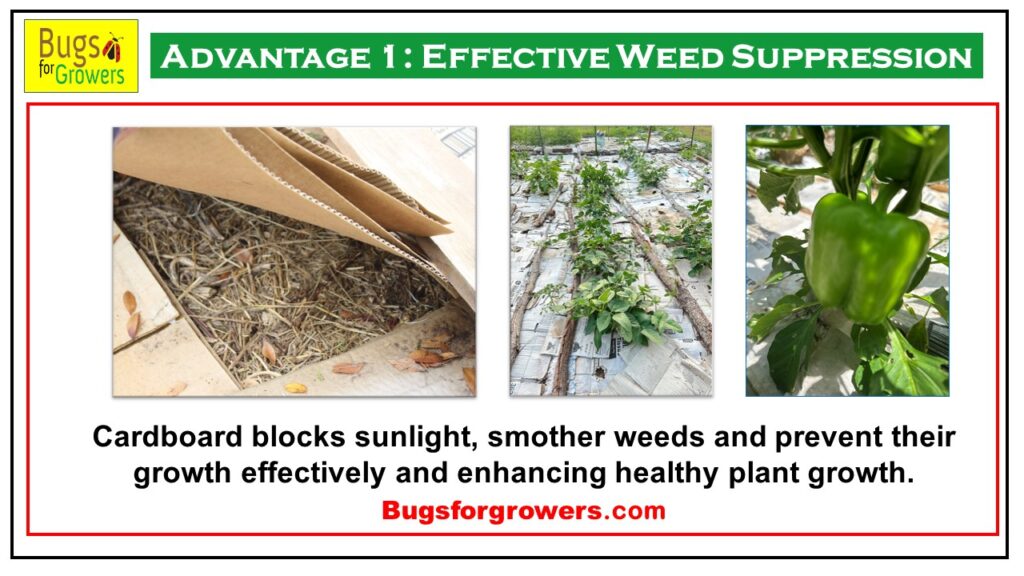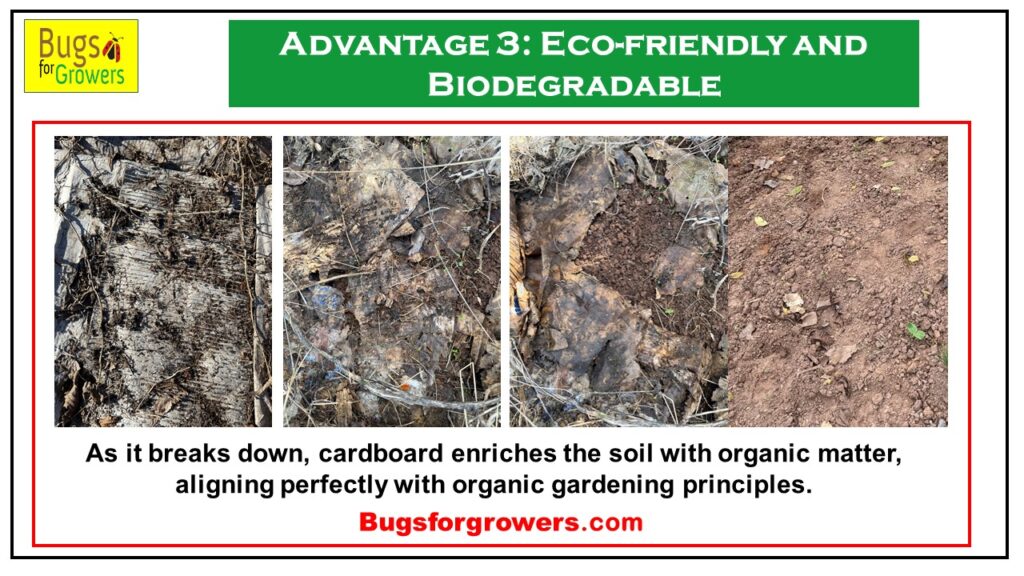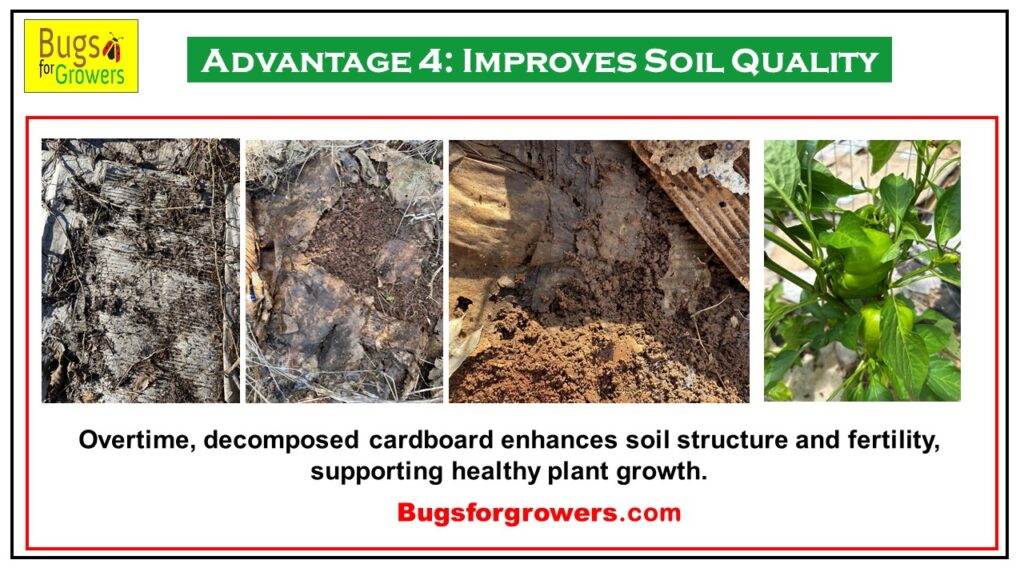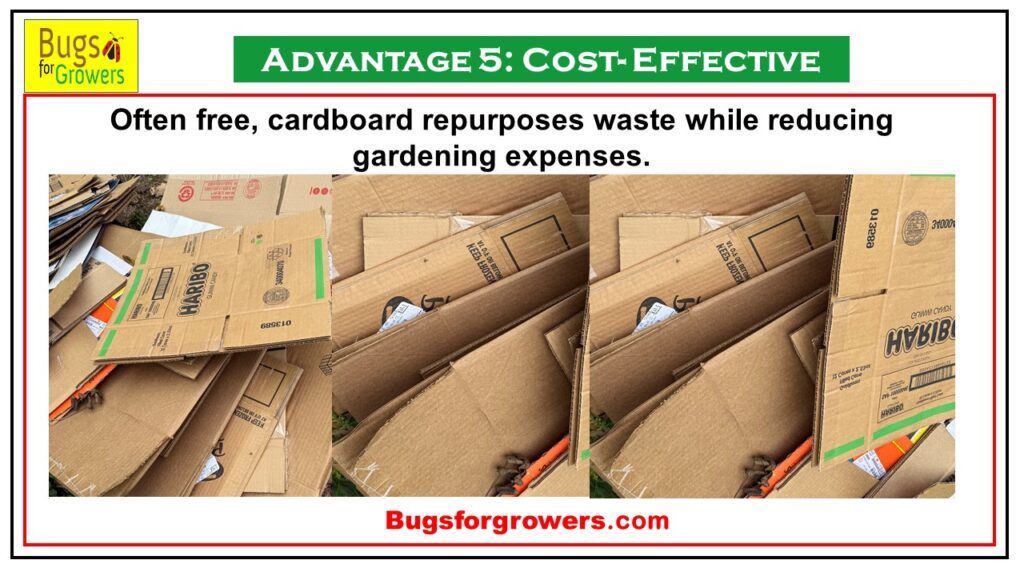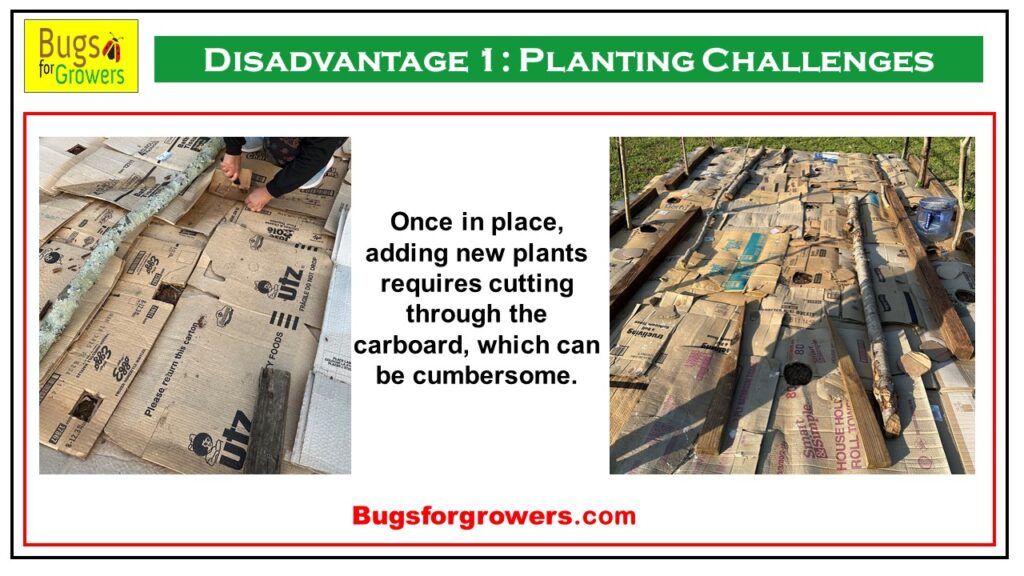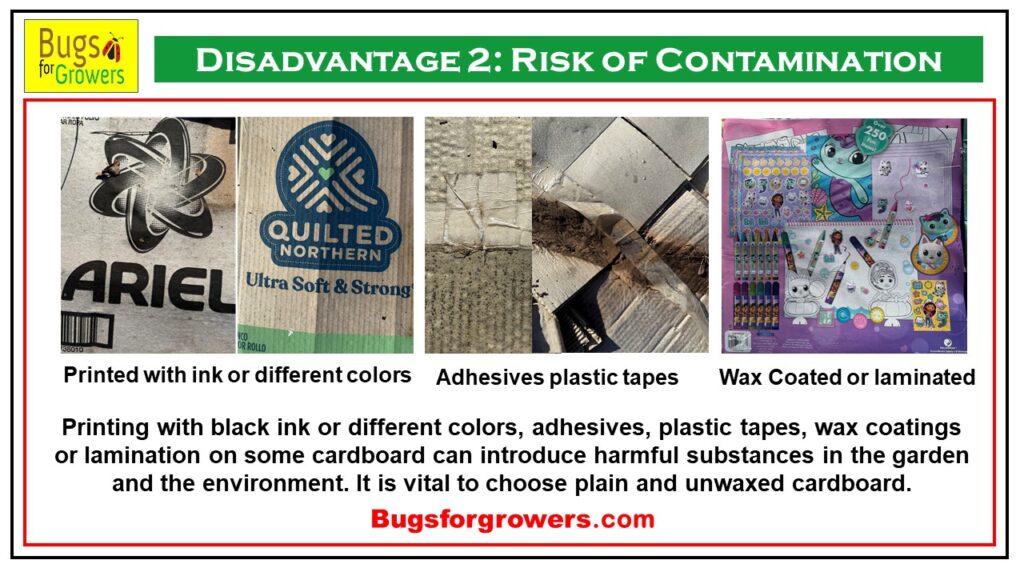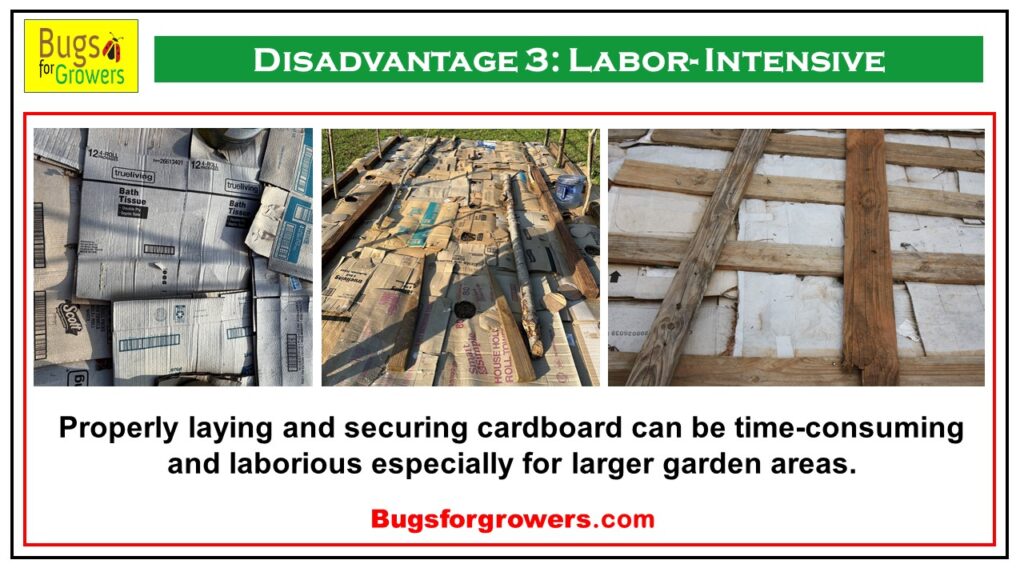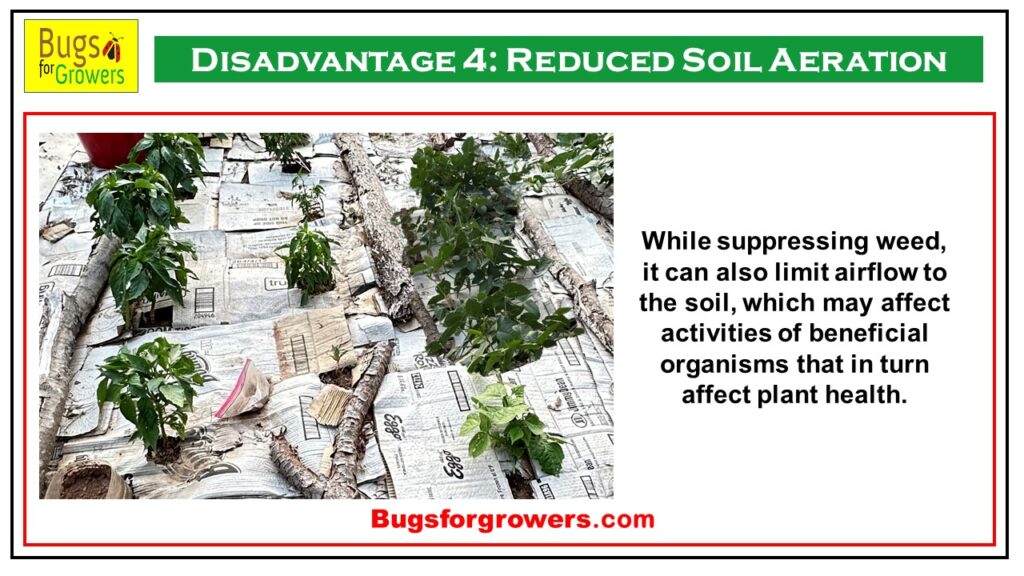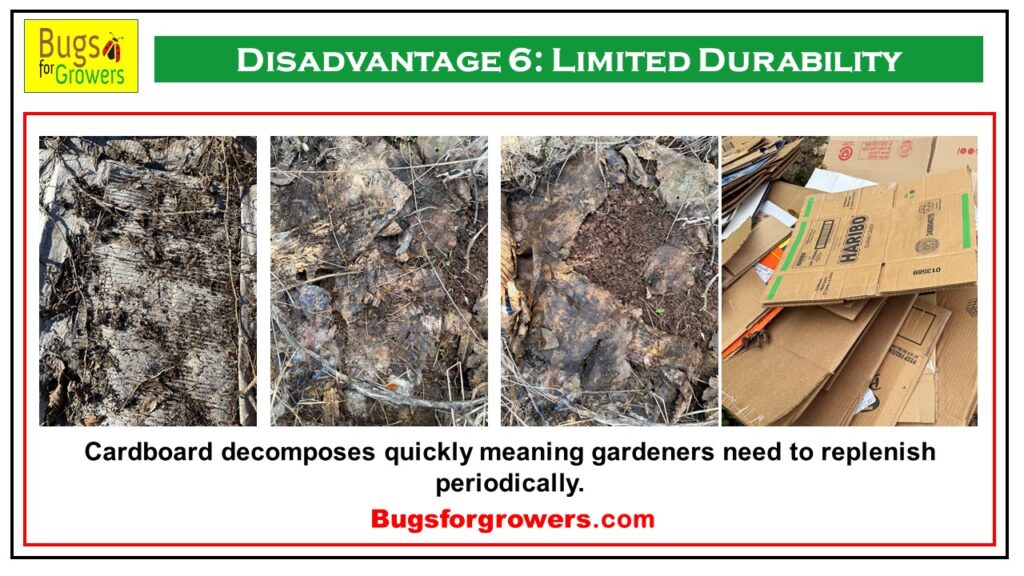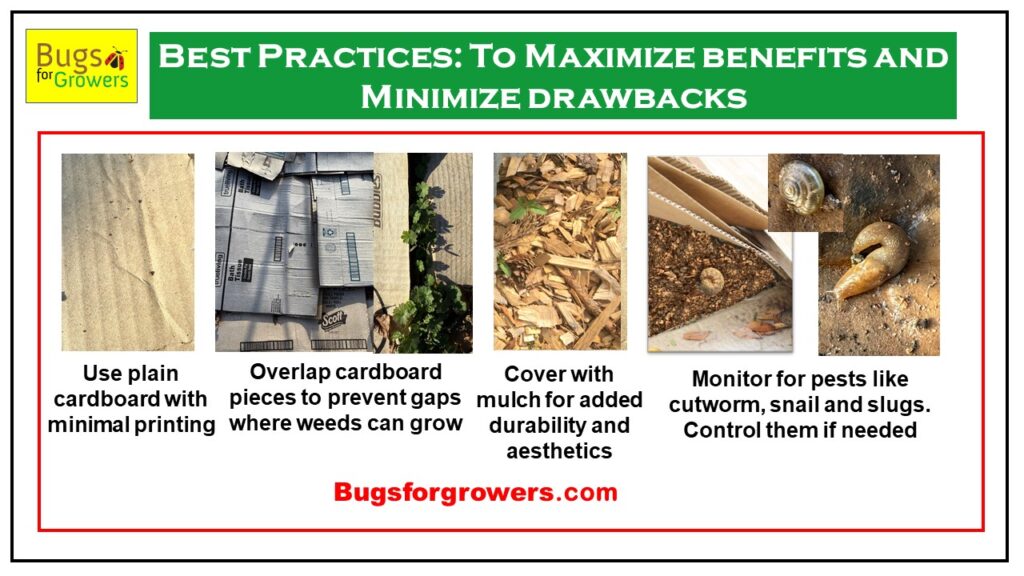Watch YouTube Video on Pros and Cons of Using Cardboard in Organic Gardening.
Introduction
Cardboard offers an innovative and eco-friendly approach to weed control in organic gardens. While its benefits are compelling, there are also some challenges to consider. Here’s an overview to help you decide if cardboard is right for your gardening needs.
Benefits of Using Cardboard
Cardboard excels at suppressing weeds by blocking sunlight, effectively smothering their growth. This natural method eliminates the need for chemical weed control, aligning perfectly with organic gardening principles.
It also helps retain soil moisture by reducing evaporation, cutting down on watering needs and promoting a more consistent soil environment.
Cardboard’s eco-friendly nature is another plus.
Over time, decomposed cardboard enriches the soil with organic matter, enhancing fertility and structure to support healthy plant growth.
Being biodegradable, it repurposes waste materials and minimizes gardening expenses, making it both sustainable and cost-effective.
Challenges of Using Cardboard
Despite its advantages, cardboard comes with some challenges. For example, planting new additions can be tricky, requiring effort to cut through the layers.
Additionally, there’s a potential risk of contamination from inks and different colors used for printing, adhesives, plastic tape or laminated with plastic. Using plain, unwaxed cardboard and removing non-biodegradable materials is essential to mitigate this risk.
Laying cardboard, especially over large areas, can be labor-intensive.
It may also limit soil aeration, which could harm beneficial organisms if not managed properly.
The damp environment beneath the cardboard can attract pests like slugs, snails, or termites, posing risks to your plants. Also, cardboard can serve as a hiding place for cutworms during daytime.
Finally, cardboard decomposes relatively quickly, meaning it requires regular replenishment to maintain its benefits.
Best Practices for Cardboard in Gardening
To make the most of cardboard while minimizing its drawbacks:
- Choose the Right Cardboard: Use plain cardboard with minimal printing and remove any non-biodegradable elements.
- Overlap for Full Coverage: Overlap pieces to ensure no gaps for weeds to grow through.
- Enhance Durability: Cover the cardboard with mulch to extend its lifespan and improve garden aesthetics.
- Monitor for Pests: Keep an eye out for pests and take action as needed.
- Plan for Maintenance: Be prepared to replace decomposed cardboard periodically.
Conclusions
By adopting these best practices, gardeners can effectively utilize cardboard to enhance their gardens sustainably while addressing its challenges. Whether you’re an experienced organic gardener or just starting, cardboard can be a valuable tool in your quest for a thriving, eco-friendly garden.

